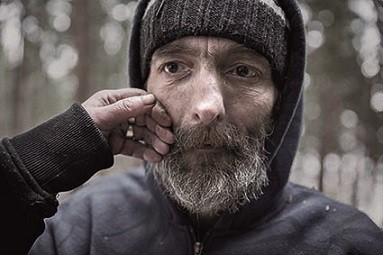
CZECHOSŁOWACKIE HISTORIE \ „Gdzie jest mój dom” \ wystawa
-
TypSztuki wizualne
-
MiejsceHol Wielki
-
Godzina g. 12 - 20
-
Data od 4.04.2019
do 19.05.2019
Wystawa
fotografii Jindřicha Štreita pt. „Gdzie jest mój dom” (2013-2017).
Jindřich Štreit wszedł ze swoim ostatnim fotograficznym projektem do
skomplikowanego, kontrowersyjnego świata ludzi bezdomnych – jako człowiek i
jako fotograf. Naszych współobywateli żyjących na obrzeżach, a często poza
nawiasem społeczeństwa dotyczy wiele aktualnych badań, na ich temat pisane są
książki naukowe, do nich adresowane są różnego rodzaju programy wsparcia, lecz
są oni także przedmiotem wielu trwale zakorzenionych mitów. Głęboki i
przenikliwy esej wizualny, intensywnie i systematycznie zgłębiający problem bezdomności
w Republice Czeskiej, należy jednak do rzadkości.
Portretowanie bezdomnych i ich społecznego funkcjonowania
to dla fotografa bardzo atrakcyjny temat. W procesie dokumentacji przysparza on
jednak wielu kłopotów. Fotograf, często nieświadomie, znajduje się w sytuacji
podobnej do tej, gdy turysta styka się z obcą kulturą i w ciągu kilku
godzin musi wyrobić sobie opinię na jej temat. Długoterminowy projekt Jindřicha
Štreita „Gdzie jest dom mój” ma szansę tę sytuację w radykalny sposób odmienić.
Autor zanurzył się w świat ludzi bezdomnych, odrzucając uprzedzenia, przyjmując
postawę pokory, którą wypracował podczas wcześniej realizowanych projektów
społecznych, dotyczących m.in. osób starszych, z niepełnosprawnościami,
niewidzących i uzależnionych od narkotyków. Jindřich Štreit w swoim nowym cyklu nie stara się
analizować przyczyn bezdomności. Przynosi tylko mocną w swym wizualnym wyrazie wiadomość
ze świata, do którego nie odważylibyśmy się wejść nawet w myślach.
Większość mieszkańców europejskiej przestrzeni kulturowej
żyje w pewności, że następnego dnia nie będą musieli opuścić miejsca, w którym
są zadomowieni, że nie zostaną przymusowymi nomadami. W dzisiejszym rozchwianym
i niespójnym świecie pojęcia takie jak dom, zadomowienie, tożsamość odzyskują
swoją pierwotną wartość i stają się ważnym tematem dla jednostek i całych
społeczności. Dom jako azyl dla ciała i duszy, fragment ściany mieszkania jako miejsce
do powieszenia obrazu z bliskim sercu motywem, łóżko, stół na który można odstawić
szklankę lub książkę – to wszystko tworzy zestaw pozornie oczywistych rzeczy, niezbędne
tło dla poczucia bezpieczeństwa i przestrzeń do skupienia, do psychicznej i
fizycznej regeneracji. Z fotografii Štreita wyłaniają się naglące pytania.
Czym bezdomni zastępują podstawowe ludzkie potrzeby – potrzebę bezpieczeństwa,
miłości, godności i uznania? Z czego budują symboliczne ściany dające poczucie
pewności i prywatności? Czy ich bezdomność jest stanem przejściowym
z możliwością powrotu, czy ostatecznością? O czym całymi dniami myślą
ludzie pozbawieni domu?
Surowe, niestylizowane portrety ludzi bezdomnych emanują
atmosferą wzajemnego zaufania i empatii. Jeśli ktoś nie doświadczył czegoś
podobnego, nie potrafi wczuć się w codzienność człowieka bez domu. Ta
codzienność to wizja niekończących się godzin od północy do świtu, męczące
chwile nad ranem, zawieszone między ciemnością i światłem, sekundy nie do zniesienia.
Czas ludzi pozostawionych samym sobie, którzy nie mają możliwości wtulenia się,
poczucia uspokajającego dotyku ręki, mają za to świadomość, że nie istnieje
żadna podpora, choćby w postaci świecącego ekranu telewizora, która pomogłaby
człowiekowi dotrwać do poranka. Alkohol
staje się zaledwie plastrem na jątrzącą się ranę wykorzenienia.
Większość fotografii Štreita – paradoksalnie – pokazuje indywidualność
i poczucie własnej wartości. Bezdomni noszą ze sobą swoją historię oraz obecną
sytuację jak ślimak muszlę. Autor portretuje swych bohaterów z wielkim szacunkiem
dla ich pragnienia, by żyć godnie – na miarę możliwości. Z fotografii nie
można wyczytać losów ludzi, dlatego też nie mamy prawa ich oceniać. Dążenie
osób bezdomnych, by nie rezygnować z człowieczeństwa, wymaga niewyobrażalnych
nakładów energii, odwagi i woli. Autor obrazuje każdego z nich, odsłaniając sam
rdzeń ich skomplikowanej egzystencji.
Bezdomność jako trudny i bolesny fenomen współczesnego
społeczeństwa ma również tragiczny wymiar indywidualny. Przyczyn utraty domu
jest cała masa, ale w większości przypadków wynika ona z nagłej, niechcianej
sytuacji. Stale rosnąca społeczność ludzi bezdomnych nie jest jednak jednorodna:
znajdują się w niej też osoby, które bezdomność wybrały dobrowolnie jako sposób
na życie. Tę postać bezdomności, która nie wynika z niekorzystnej sytuacji
ekonomicznej, nie jest związana z wiekiem czy wykształceniem, można rozumieć
jako skrajne pragnienie absolutnej wolności. Warunkiem jej realizacji jest
integralność jednostki, spójność poglądów i siła potrzebna do tego, by poradzić
sobie z tym alternatywnym sposobem życia.
Bezdomni są prawdopodobnie jedyną wspólnotą ludzką, która
ma szansę przeżyć upadek naszej hedonistycznej cywilizacji.
Patrząc na fotografie Jindřicha Štreita, odczuwamy
bezdomność jako rzeczywiste i groźne zjawisko społeczne, a jednocześnie jako
wewnętrzny stan ducha. Indywidualne przyczyny bezdomności są często dla
większości społeczeństwa niezrozumiałe. Powtarzając jak mantrę słowa, że
bezdomni sami są sobie winni, pozbywamy się nieprzyjemnego poczucia, że również
my mamy swój udział w niesprawiedliwości tego świata.
Naturalistyczne obrazy Štreita silnie kojarzą się
z malarskimi esejami Bruegla i intensywnie oddziałują swą specyficzną
duchowością, porównywalną do biblijnych czy mitologicznych opowieści. Autor
portretuje ludzi bezdomnych we wszystkich przejawach ich egzystencji, bez
patosu i idealizacji, za to z wyczuwalnym przyzwoleniem i zrozumieniem
sytuacji.
Humanistyczne przesłanie fotografa bezdomnych wyraża się
w jego empatycznym podejściu do ludzi marginesu. Fotografie Štreita zachęcają
do refleksji nad chwiejnością, nieprzewidywalnością, a jednocześnie wartością własnego
życia.
autor tekstu: Jiří Siostrzonek
tłumaczenie: Eva Zamojska

